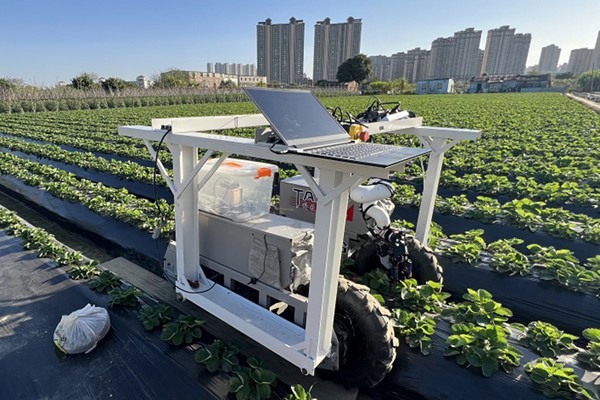A team led by Washington State University (WSU) has developed and tested a robotic harvester for open-field strawberry production. The system combines an artificial intelligence visioning platform, silicone grippers, and a fan system that moves leaves aside to access hidden fruit.
Laboratory and field trials showed the harvester detected strawberries correctly 80% of the time and classified whether berries were hidden 93% of the time. Picking efficiency improved with the fan system, harvesting 74% of ripe fruit compared with 58% without fans. On average, the robot required 20 seconds to identify and pick a berry when using the fan system.
The study was published in July in Computers and Electronics in Agriculture. Lead author Zixuan He completed the work at WSU's Biological Systems Engineering Department and is now a postdoctoral researcher at Aarhus University in Denmark. Co-authors included Manoj Karkee, now at Cornell University with an adjunct appointment at WSU, and Qin Zhang, professor emeritus at WSU.
 © Zixuan He WSU
© Zixuan He WSU
The global strawberry market, valued at about US$20 billion, is projected to grow 6% annually over the next decade. Labor shortages continue to pressure the sector, with rising costs and potential supply constraints. Robotic harvesting has long been studied, but identifying berries hidden under leaves remains a challenge in open-field systems.
"Novel approaches like these are essential to improve the fruit accessibility and picking efficiency, and thus enhance the practical applicability of harvesting robots," said Karkee. Earlier research has often focused on greenhouse and table-top systems, where fruit is more visible and easier to pick mechanically.
The WSU harvester is a four-wheeled cart carrying the robotic platform and computer system above the strawberry rows. Its vision system uses a 3-D camera that captures both color and depth images. He explained: "We then use the machine learning model to find the strawberry based on the fruit feature information matched to the depth information, and then we know its location." The system then calculates how the grippers should approach and pick the fruit.
He added that the fan system could be applied to other crops where occlusion is a challenge, such as grapes. "Right now, it won't totally replace the manual labor, but it could be a very promising supplement when you don't have enough people in the field," He said.
For more information:
Washington State University
Zixuan He
Email: [email protected]
Manoj Karkee
Email: [email protected]
Shawn Vestal
Email: [email protected]
www.news.wsu.edu
